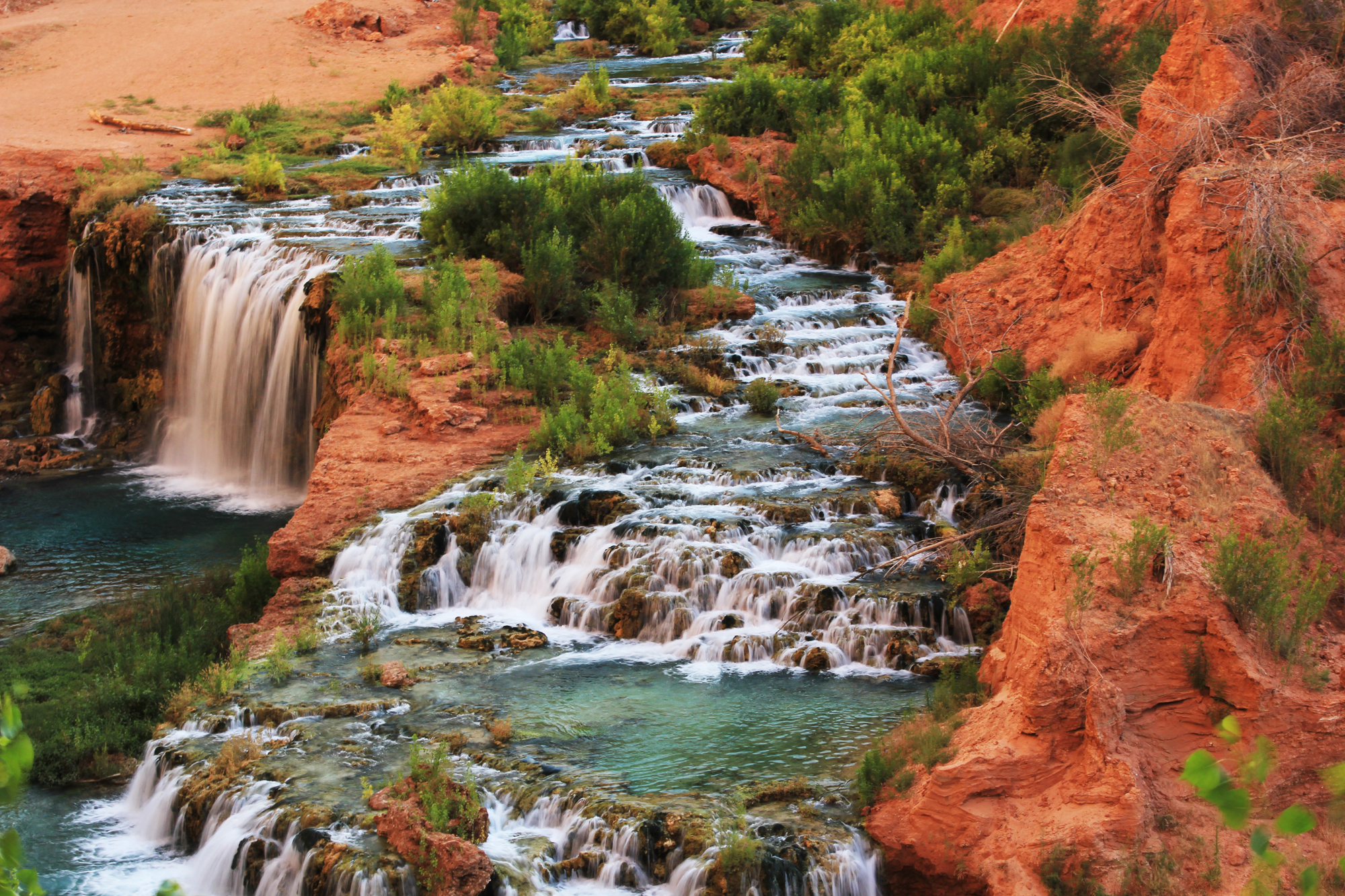WATERSHOES or WATER SHOES – BRING A PAIR ON THIS TRIP
Watershoes are recommended, in addition to what you hike in with. You will want these if you will be doing any wading or swimming in any of the pools.
The travertine dams in the stream are often destroyed during flood conditions. These dams break into hard sharp pieces that make up the bottom of the stream. The stream bottom equates to crushed tile in many places. You can use any type of slip on footwear that will protect your feet. Flip flops are not recommended….but you will see it done.
Again its a long hike out with foot trouble. There are more expensive water shoes that will double as camp footwear. This will allow your hiking boots/shoes to air out.
Open types such as sandals or web tops, invite sand and small sharp pieces to end up inside your water footwear. So the closed style provide you better comfort and more protection to the sides of your foot. Others have reported success using neoprene socks with cheap water shoes.
This is another area that open types of footwear invite a foot/toe cut, puncture, etc., from submerged objects.
One of the most common mistakes is to wear water shoes continuously, while day hiking. If you are making multiple stream crossings (such as a campground to Beaver Falls trip), take both your water shoes, and your socks and normal hiking footwear. Some may find it wise to switch back and forth as you have to, while making those water crossings.
Feet that remain in wet shoes will more than likely cause you problems. The skin softens and it is easy to get a blister or shoe cut. Especially from sandal types with a back of the heal strap, or rough sewn seam.
Take the little extra time to take off your wet water shoes and keep your feet in dry socks and shoes while on the trail.
![]()
